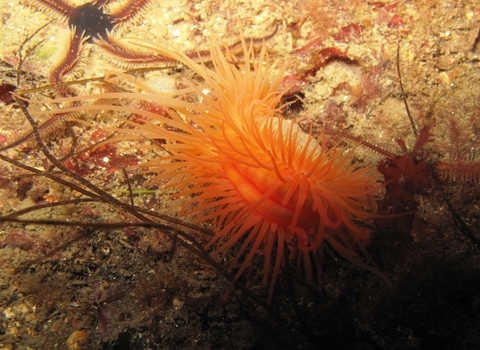
Flame shell ©Polly Whyte/Earth in Focus
Flame shell
It's easy to see where this stunning bivalve got its name from - the bright orange tentacles emerging from the shell really do look like flames!
Enw gwyddonol
Limaria hiansPryd i'w gweld
January to DecemberTop facts
Stats
Length: Up to 4cmFile shell beds are Priority Habitat under the UK Post-2010 Biodiversity Framework and a priority marine feature in Scotland's seas. Nature Conservation Marine Protected Areas are designated to protect Flame shells in Scottish waters.
